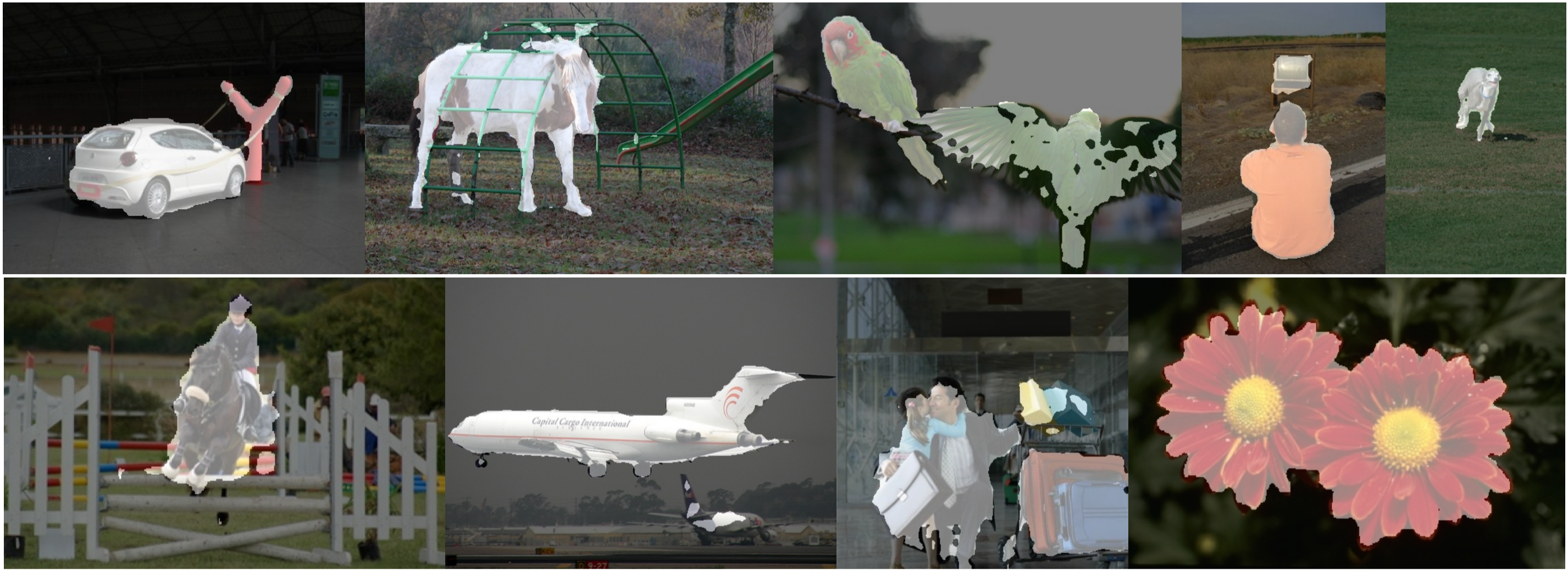Pytorch implementation of the unsupervised object localization method FOUND. More details can be found in the paper:
Unsupervised Object Localization:
Observing the Background to Discover Objects
by Oriane Siméoni, Chloé Sekkat, Gilles Puy, Antonin Vobecky, Eloi Zablocki and Patrick Pérez
If you use our FOUND code or framework in your research, please consider citing:
@article{simeoni2022unsupervised,
author = {Siméoni, Oriane and Sekkat, Chloé and Puy, Gilles and Vobecky, Antonin and Zablocki, Éloi and Pérez, Patrick},
title = {Unsupervised Object Localization: Observing the Background to Discover Objects},
journal = {CoRR},
volume = {abs/2212.07834},
year = {2022},
ee = {http://arxiv.org/abs/2212.07834}
}
- Presentation
- Installation
- Using FOUND
- Evaluation: Saliency object detection
- Evaluation: Unsupervised object discovery
- Acknowledgments
This code was implemented and tested with python 3.7, PyTorch 1.8.1 and CUDA 11.1. Please install PyTorch. In order to install the additionnal dependencies, please launch the following command:
# Create conda environment
conda create -n found python=3.7
conda activate found
# Install dependencies
pip install -r requirements.txtPlease install also DINO paper. The framework can be installed using the following commands:
git clone https://github.com/facebookresearch/dino.git
cd dino;
touch __init__.py
echo -e "import sys\nfrom os.path import dirname, join\nsys.path.insert(0, join(dirname(__file__), '.'))" >> __init__.py; cd ../;We provide here the different command lines in order to repeat all results provided in our paper.
Using the following command it is possible to apply and visualize our method on one single image.
python main_visualize.py --img-path /datasets_local/VOC2007/JPEGImages/000030.jpgWe evaluate our method FOUND for the saliency detection on the datasets
- DUT-OMRON:
--dataset-eval DUT-OMRON - DUTS-TEST:
--dataset-eval DUTS-TEST - ECSSD:
--dataset-eval ECSSD.
Please download those datasets and provide the dataset directory using the argument --dataset-dir.
The parameter --evaluation-mode allow you to choose between single and multi setup and --apply-bilateral can be added to apply the bilateral solver. Please find here examples on the dataset ECSSD.
export DATASET_DIR=data/ # Put here your directory
# ECSSD, single mode, with bilateral solver post-processing
python main_found_evaluate.py --eval-type saliency --dataset-eval ECSSD --evaluation-mode single --apply-bilateral --dataset-dir $DATASET_DIR
# same but multi mode
python main_found_evaluate.py --eval-type saliency --dataset-eval ECSSD --evaluation-mode multi --apply-bilateral --dataset-dir $DATASET_DIRIn order to evaluate on the unsupervised object discovery task, we follow the framework used in our previous work LOST.
The task is implemented for the following datasets, please download the benckmarks and put them in the folder data/.
export DATASET_DIR=data/ # Put here your directory
# VOC07
python main_found_evaluate.py --eval-type uod --dataset-eval VOC07 --evaluation-mode single --dataset-dir $DATASET_DIR
# VOC12
python main_found_evaluate.py --eval-type uod --dataset-eval VOC12 --evaluation-mode single --dataset-dir $DATASET_DIR
# COCO20k
python main_found_evaluate.py --eval-type uod --dataset-eval COCO20k --evaluation-mode single --dataset-dir $DATASET_DIRThis repository was build on the great works SelfMask, TokenCut and our previous work LOST. Please, consider acknowleding these projects.

